How to Read Your HDB Floor Plan in 10 Seconds
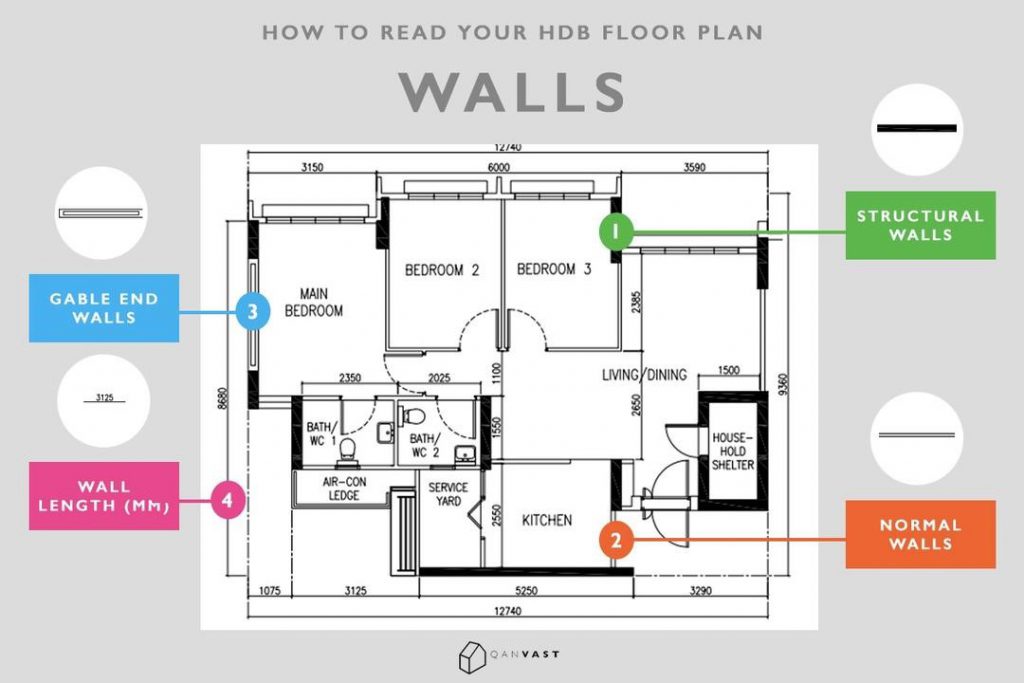
Take a look at this useful guide that will teach you how to decipher your HDB floor plan like an expert! So, you've just received the layout of your new home and you're eager to start planning your renovation. However, there's one small problem: you're having trouble understanding the floor plans. But don't worry! Just follow our guide below, which explains how common home structures are depicted in floor plans. With this information, you'll be able to understand everything on your own in a short time.
Walls
It's quite obvious that lines in a floor plan represent walls, but did you know that different types of walls (such as structural, normal, and gable end) are represented differently on a floor plan? Here's how they are displayed:
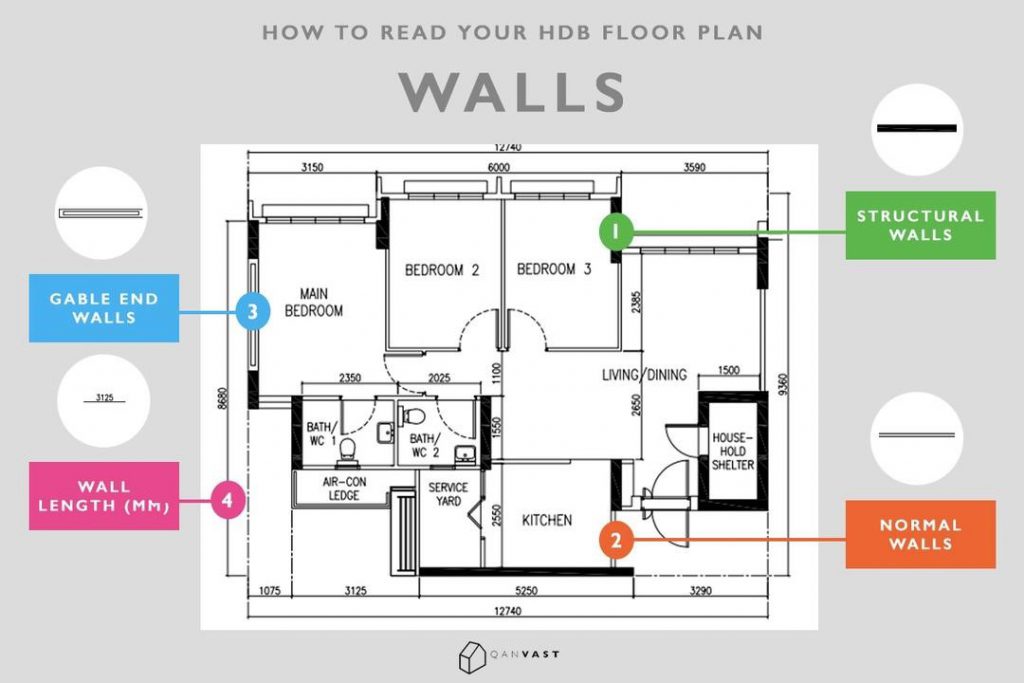
1. Structural Walls
Represented by bold lines, structural walls are foundations or pillars that hold your flat together and they can’t be hacked away.
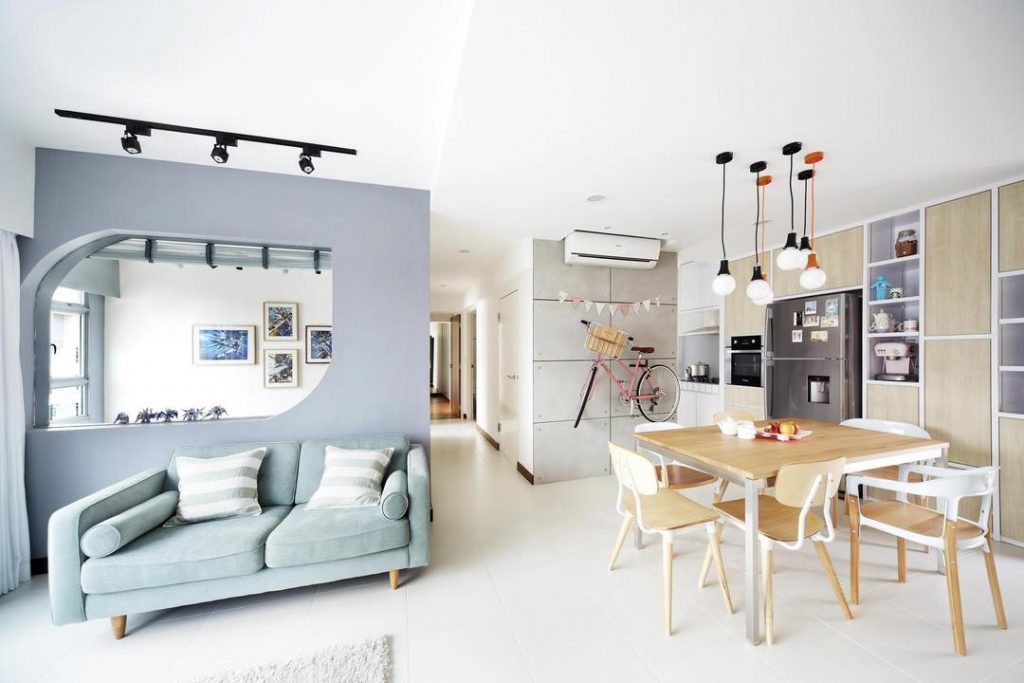
Interior Firm: Free Space Intent
Unable to breach a bomb shelter? Transform it into a striking focal point and a functional division in your space. This enjoyable wall, with its concrete finish, serves as a barrier between the kitchen and bedrooms.
2. Regular Walls
These walls function as dividers between the rooms in your house, depicted as two lines with a slight space in between them.
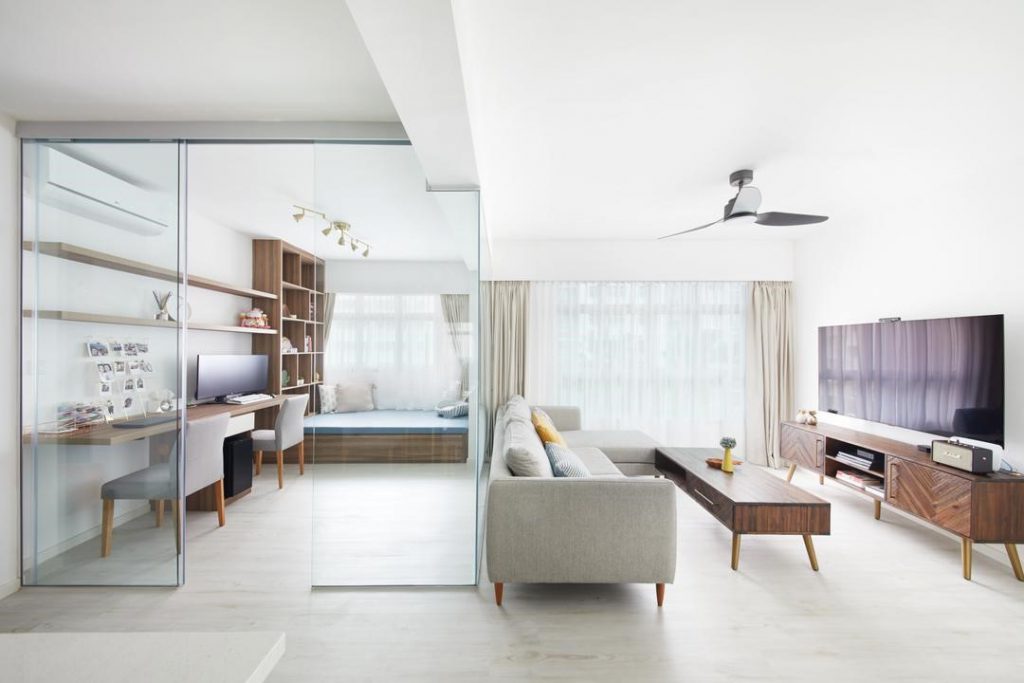
Interior Firm:Design 4 Space
Here’s an idea for your extra study room. Remove the walls and replace them with a glass-box style partition for a clear, unbroken look.
3. Gable-end Walls
Found in corner units, these walls come with short awnings that protect your home from sun and heat.
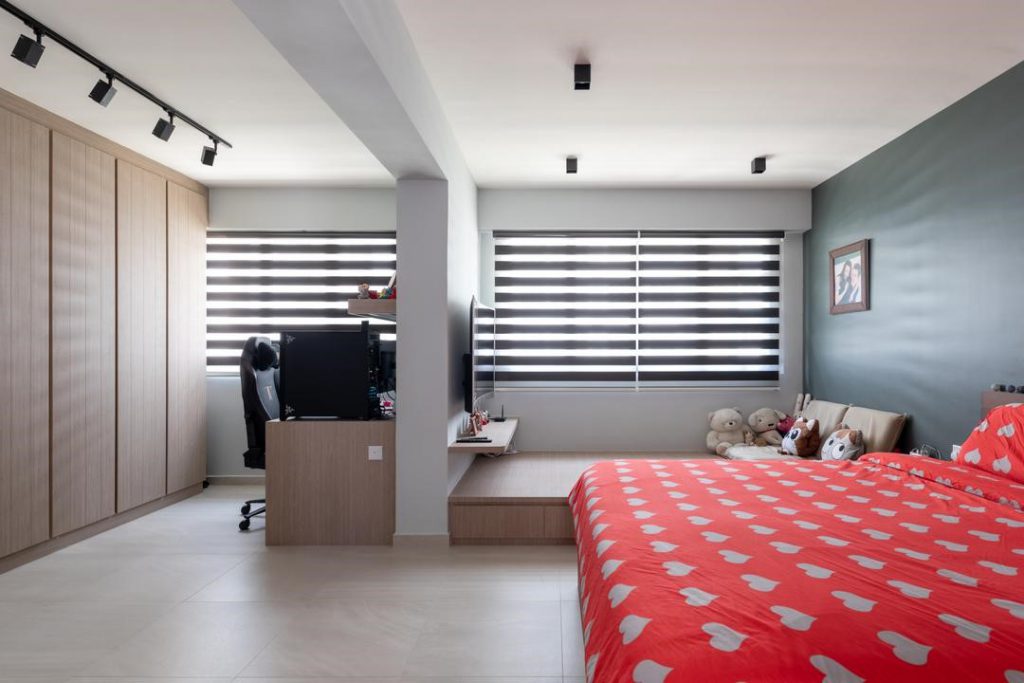
Interior Firm:D5 Studio Image
4. Wall Length (in mm)
The numbers that surround your floor plan indicate wall dimensions.
Doors
Similar to walls, there are a couple of symbols that represent different types of doors:
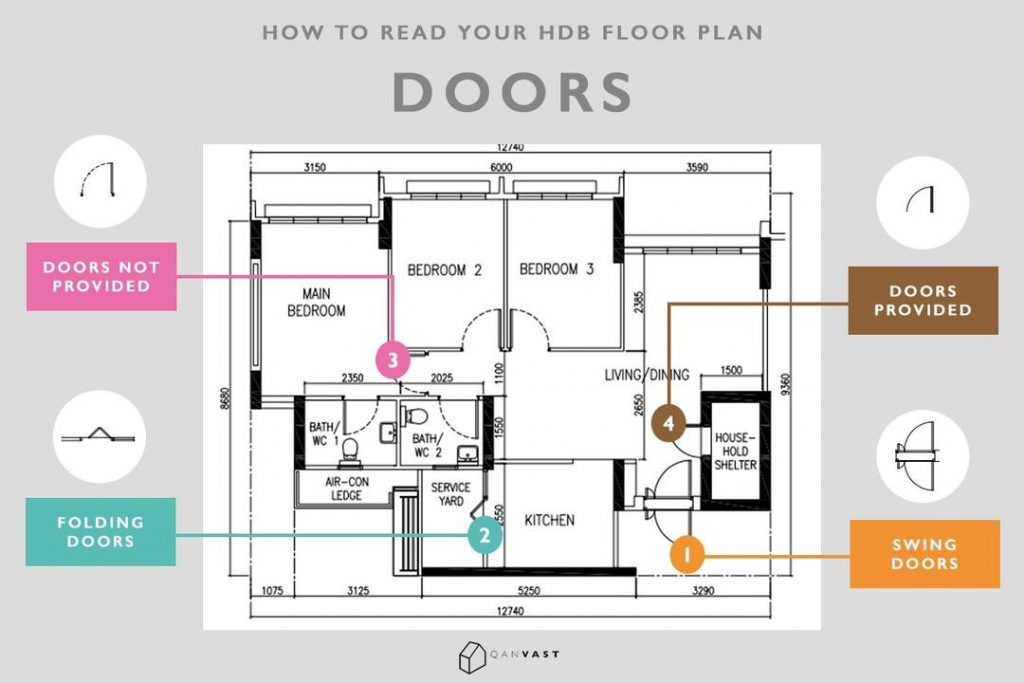
1. Swing Doors
Wedge-shaped symbols depict swing doors, showing their opening angle and direction. In HDB homes, most doors open inward, except for household shelter doors. Hence, it's best to refrain from placing furniture or built-in items within the area where the door swings.
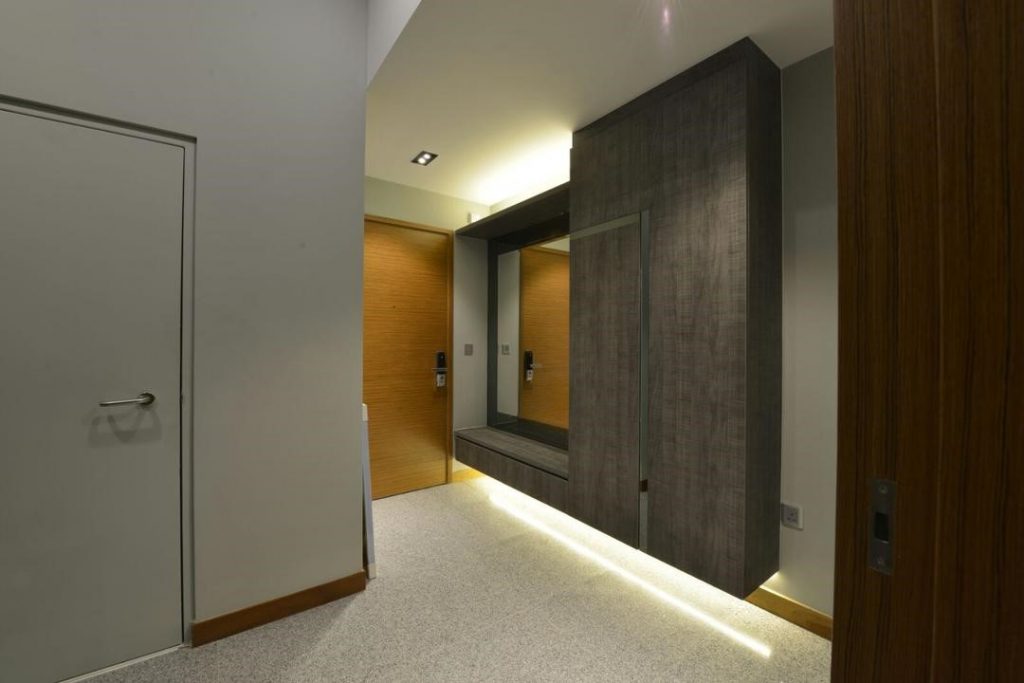
Interior Firm: Earth Interior Design Pte Ltd
No matter where you live, whether it's in an HDB home or elsewhere, make sure to install built-in storage and fixtures in locations that won't obstruct the movement of doors.
2. Folding Doors
Foldable doors, often seen in service yards and bathrooms, are indicated by V-shaped symbols.
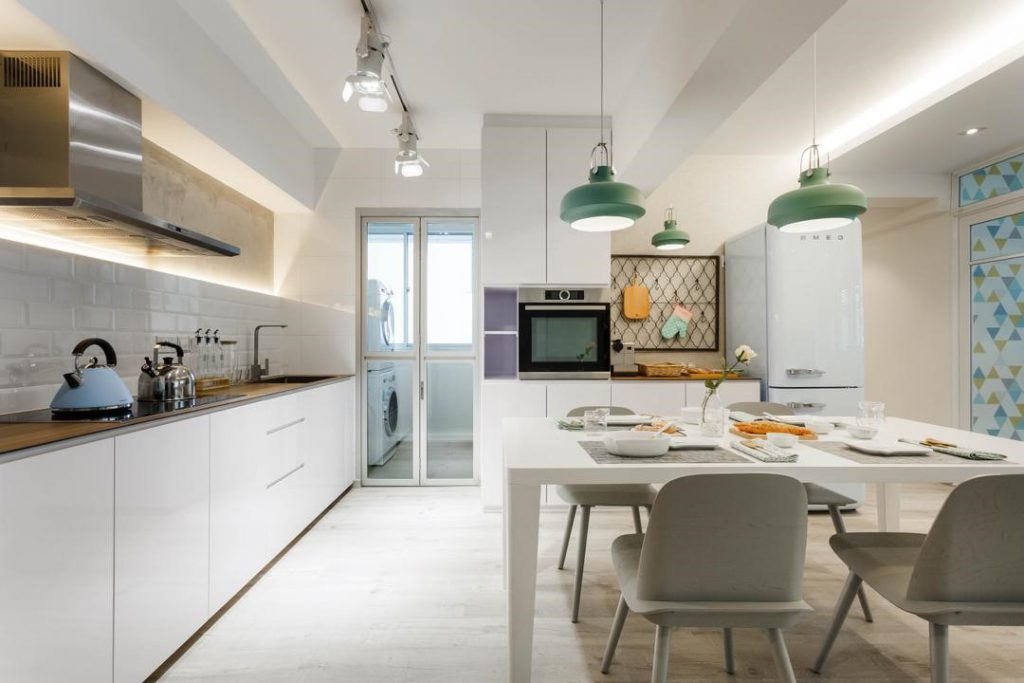
Interior Firm:Mr Shopper Studio
You are free to choose any type of door that you want for a room, as long as it doesn’t require hacking a structural wall. Also, be sure to leave sufficient walkway space!
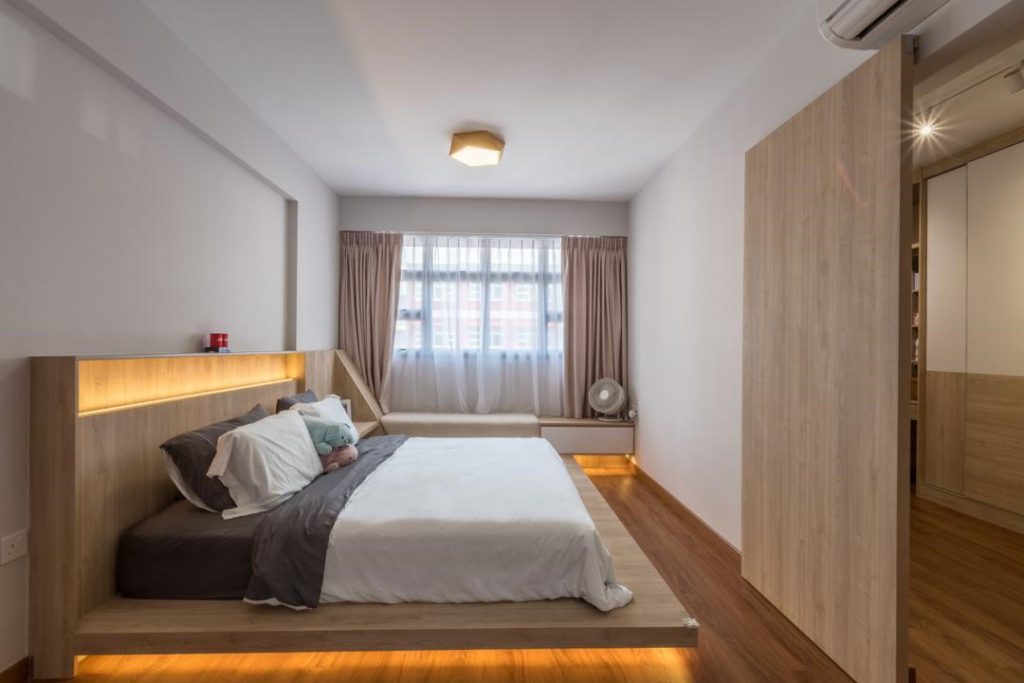
Interior Firm:Space Atelier
Lacking in walkway space? A sliding door will solve your woes because it doesn’t require an opening radius to work.
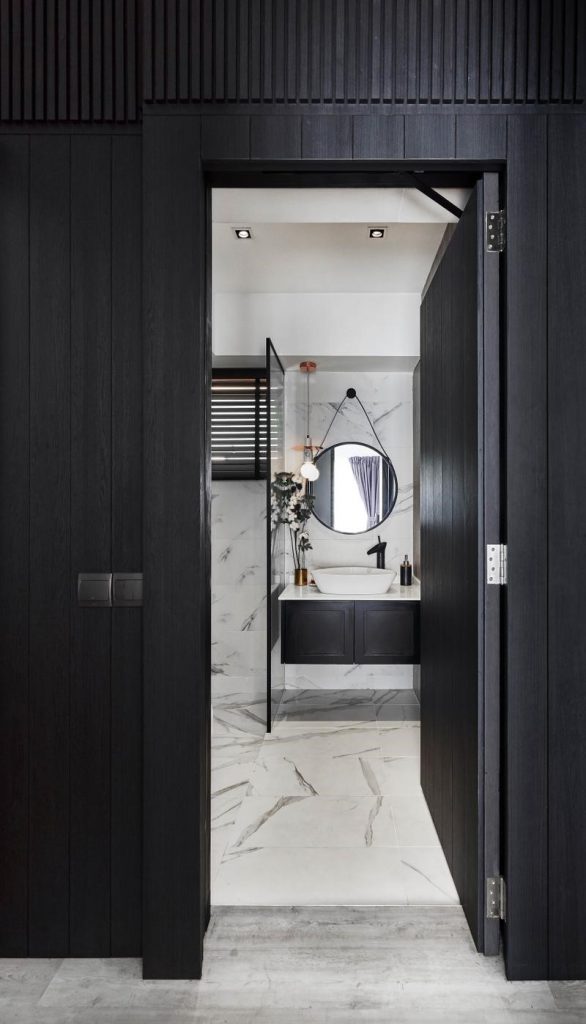
Interior Firm:Rockin Spaces
For a seamless look, camouflage your doors into a feature wall, so that it looks concealed at first glance.
Are your doors provided for?
Who's there? Oh, sorry, you may not have a door to knock on. You can determine which doorways in your floor plan come with pre-installed doors by looking at the strokes.
- Dotted/Dashed Lines: Doorways without doors provided by HDB
- Solid Line: Doorways with doors provided by HDB
Windows
HDB flats have three types of windows: sliding windows, casement windows, and top-hung windows.
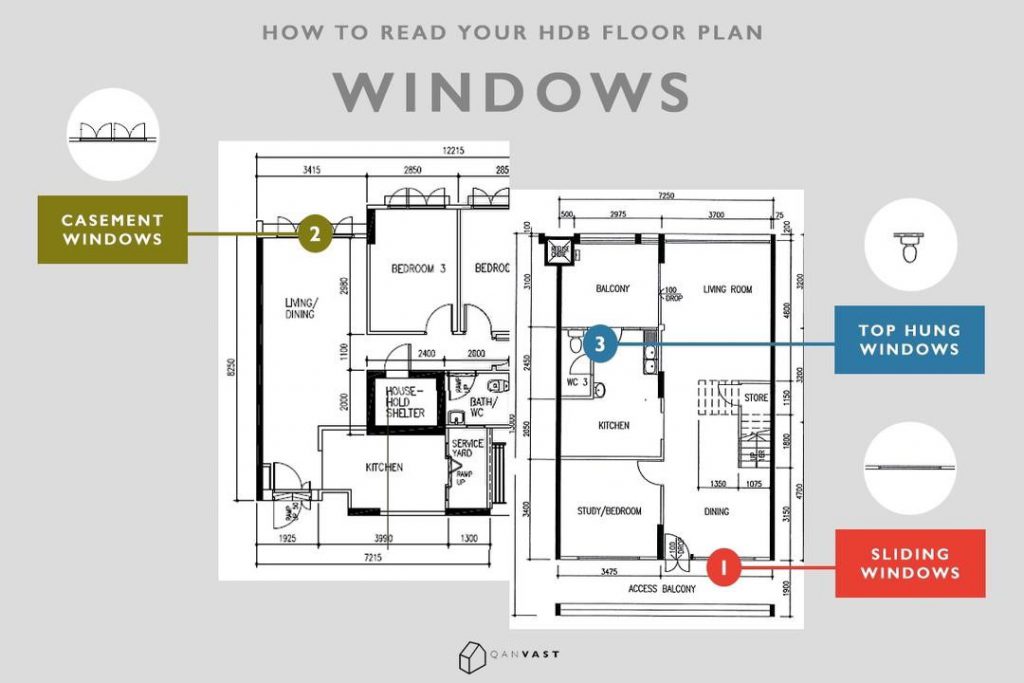
1. Sliding Windows
On a floor plan, a sliding window is shown as a thin, hollow line by the walls, which can be hard to notice.
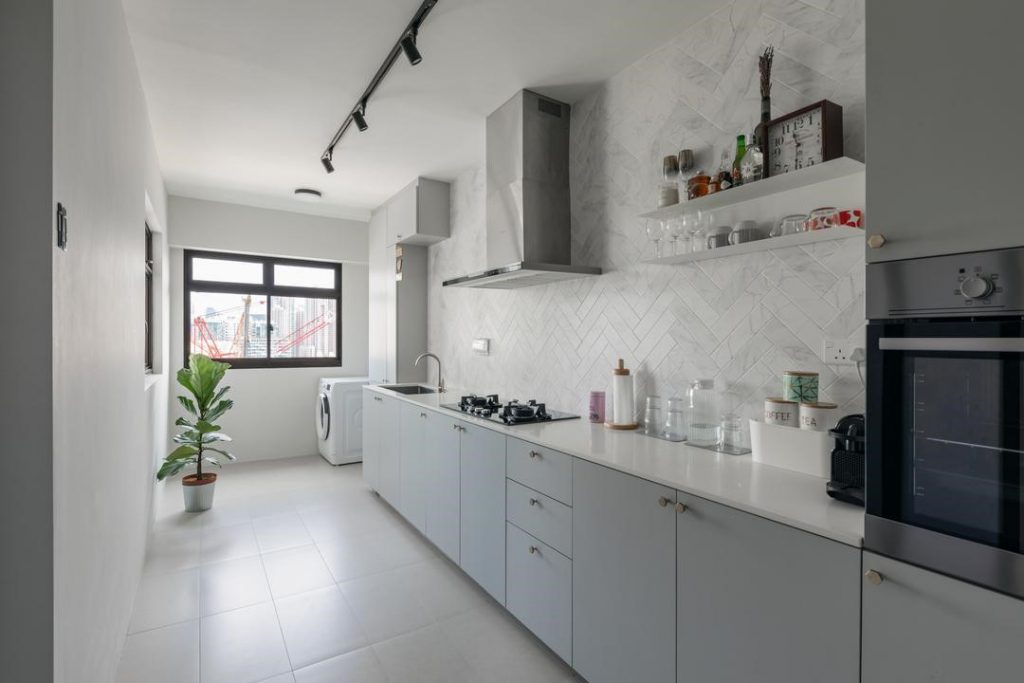
Interior Firm:Crescendo Interior & Lifestyle
Window frames aren’t just functional fixtures – they can also serve as subtle accents in a monochrome space.
2. Casement Windows
Casement windows are designed to swing open, similar to a door. They are represented by two thin lines with a thicker one in the middle (resembling a 'closed wedge') that shows the extent of their opening.
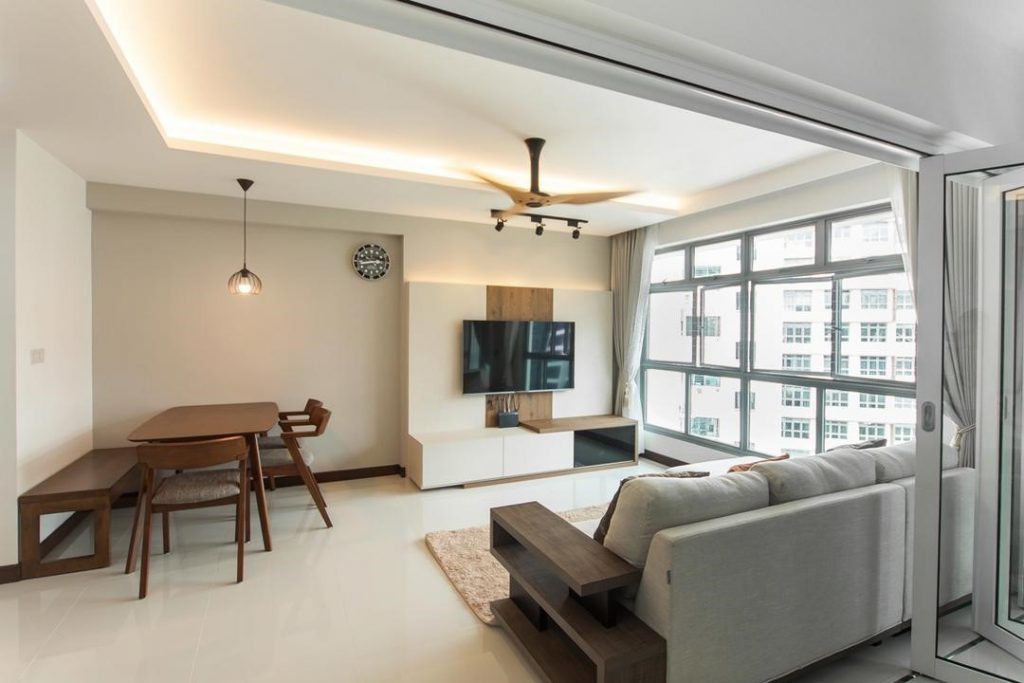
Interior Firm:Space Atelier
Kept simple, the walls surrounding the wide casement windows of this living room serve as a sleek, minimalist ‘frame’.
3. Top Hung Windows
Small top-hung windows provide ventilation for bathrooms.
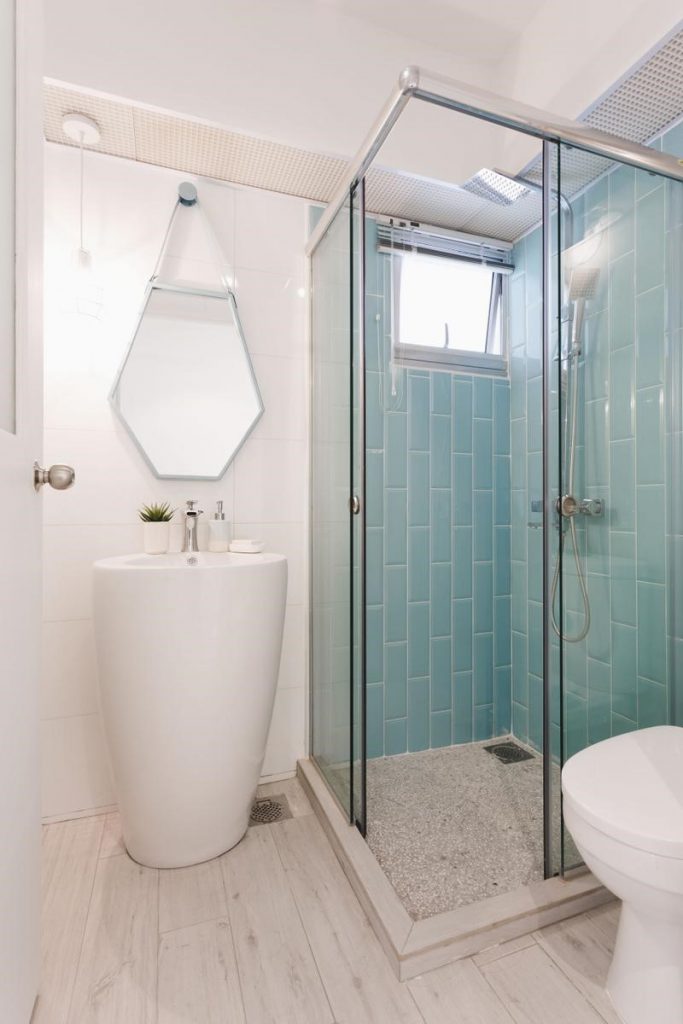 Interior Firm:Mr Shopper Studio
Interior Firm:Mr Shopper Studio
If you're concerned about privacy, consider installing a mini blind on your top-hung window. Different window types have their own advantages for specific purposes. For instance, louvred or top-hung windows are commonly used in bathrooms due to their easy accessibility from a higher position. On the other hand, casement windows are ideal for living areas as they offer improved ventilation.
It's important to note that there are regulations set by HDB regarding the installation of certain window types:
- For safety purposes, you cannot install casement windows along a common corridor.
- HDB homeowners are not permitted to alter the appearance of their 3/4 or full-length windows in order to maintain a consistent exterior.
Other Symbols
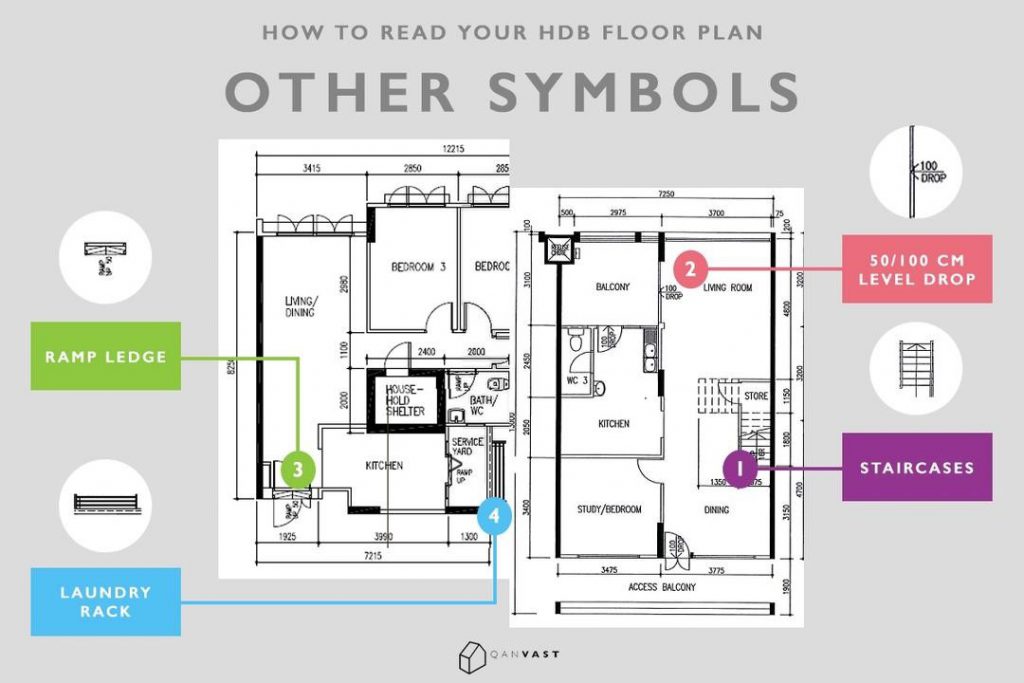
1. Stairs
For those living in a maisonette, you’ll find your home’s stairway indicated as a series of lined rectangles in the floor plan.
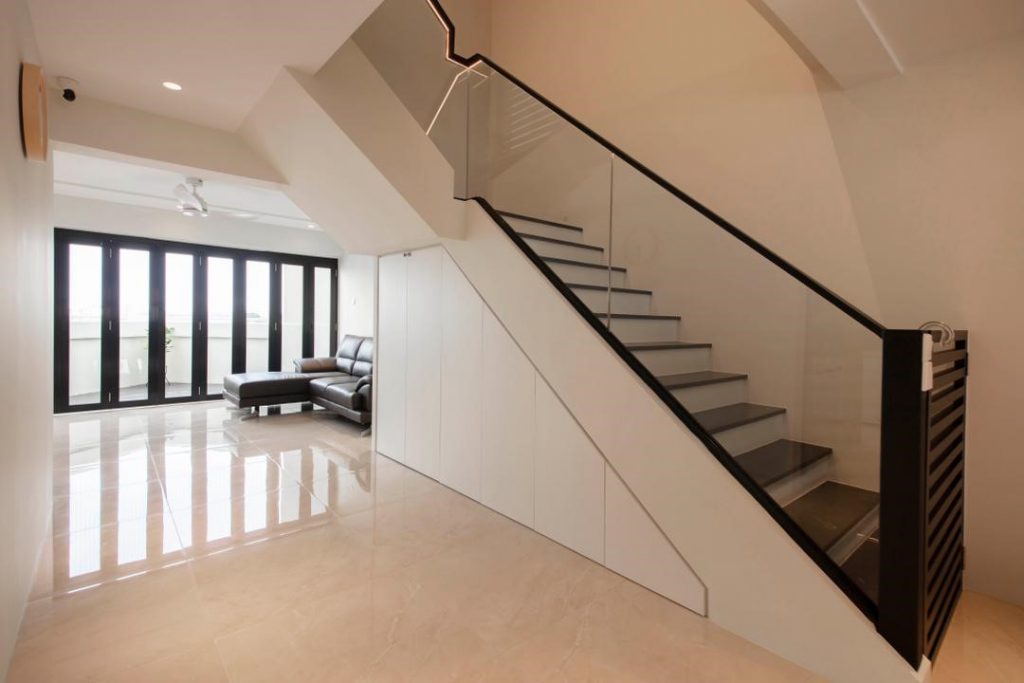
Interio2. 50/ 100mm Drop
If you want a simple way to maximise the space under your stairway, minimalist storage is the way to go.
2. 50/ 100mm Drop
This marking shows a decrease of 50mm or 100mm in the height of the floor. These decreases occur in damp places like the kitchen, balcony, and bathrooms, and they help prevent water from flooding the rest of your house by improving the way water drains away.
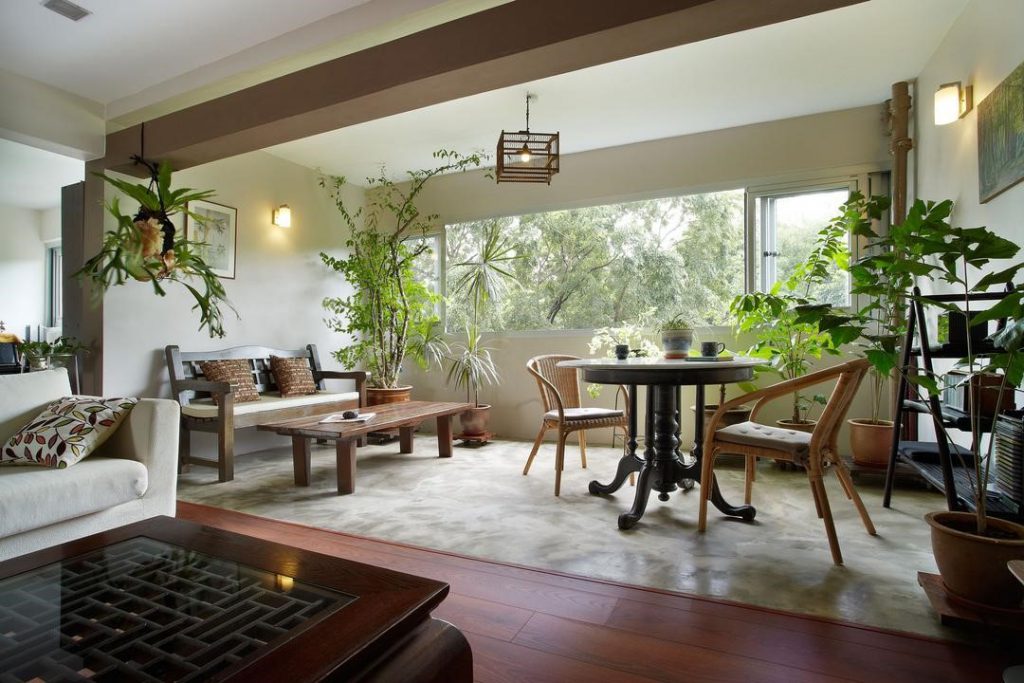
Want a smooth transition between your living space and balcony? You can achieve it by leveling the floors using cement screed, eliminating the ledge.
3. Ramp Up
The 'Ramp Up' designation is used for home areas that have ramps, making it convenient to navigate varying floor levels, such as a 100mm drop.
4. Laundry Rack Area
Newer HDBs include a laundry rack in the service yards, which is represented by three black lines on the floor plans..
Source: mynicehome.gov.sg

